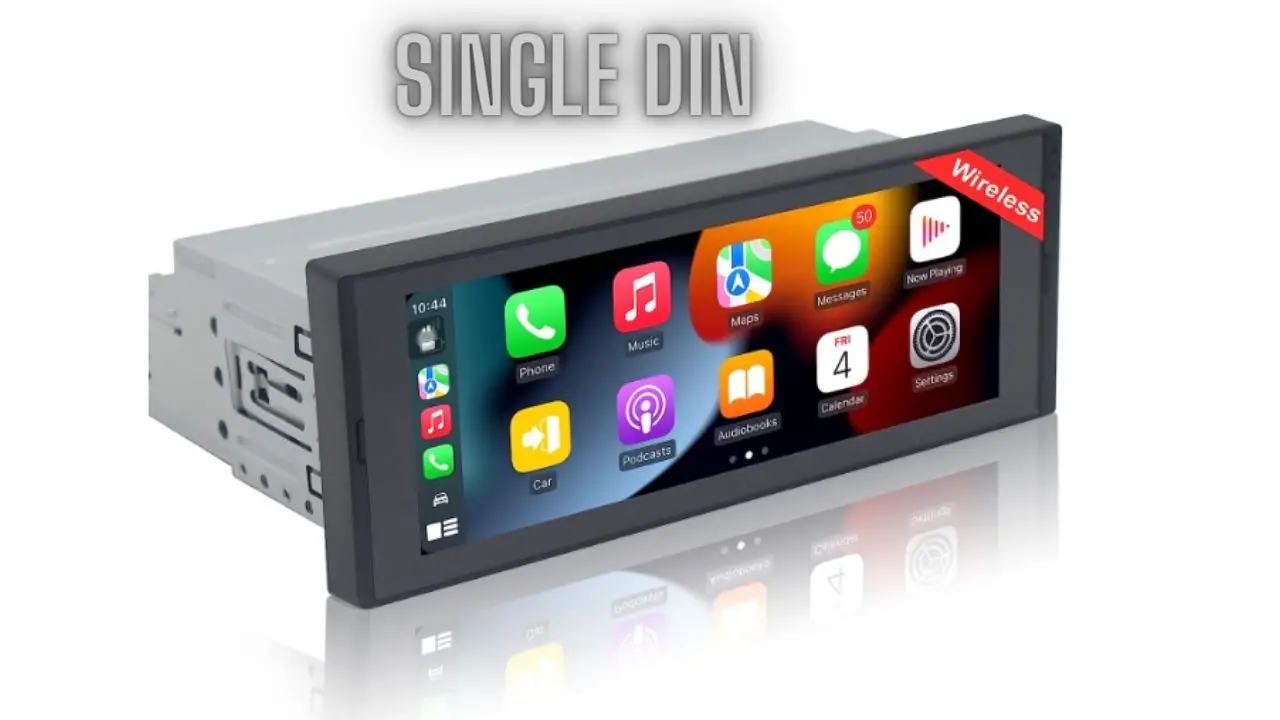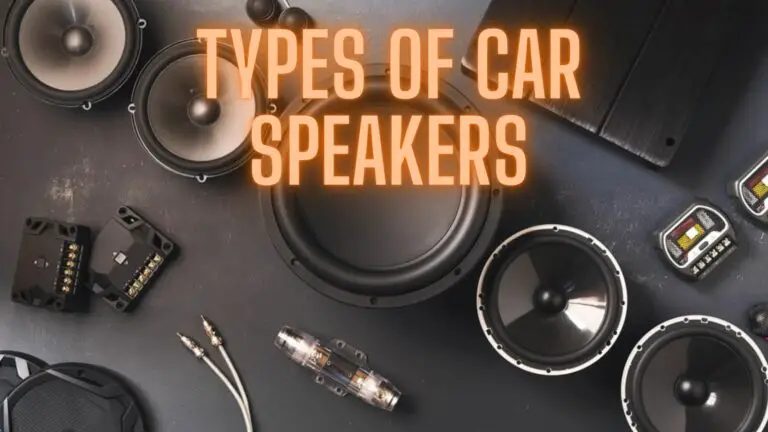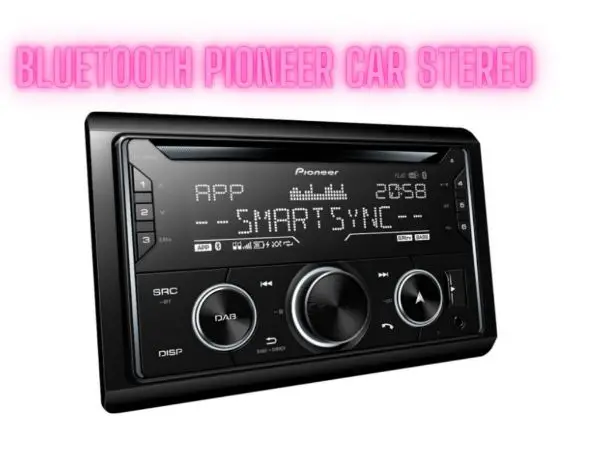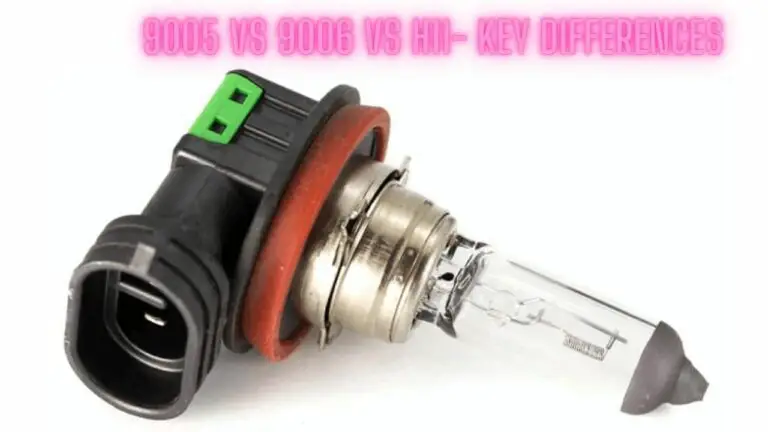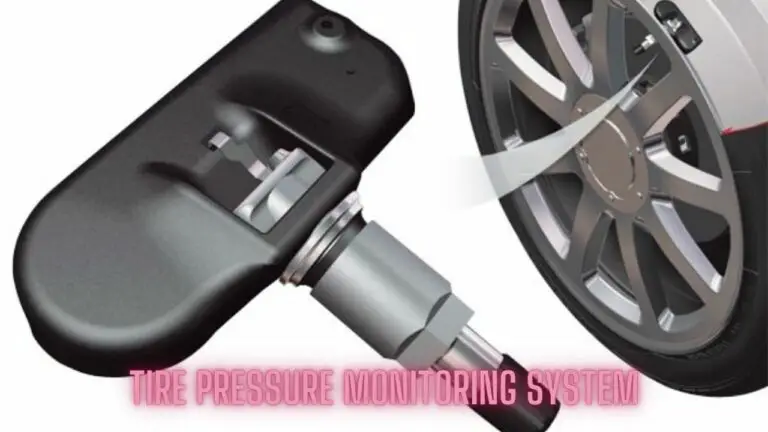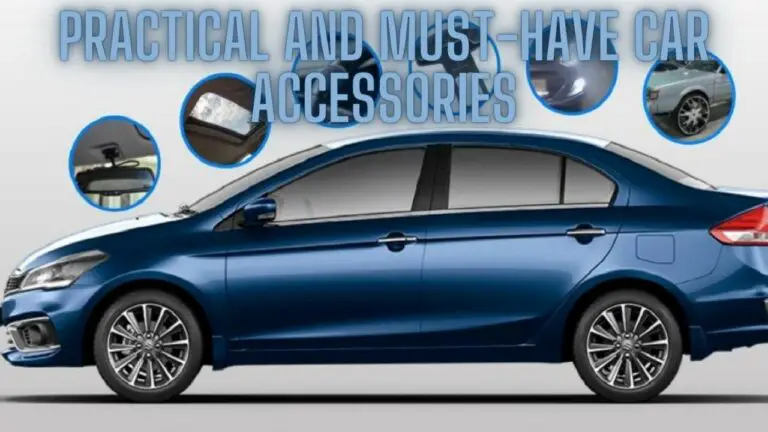Single Din vs Double Din – Which Should You Pick?
Introduction
Car stereos, also known as car audio systems or car radios, are essential components of vehicles that provide entertainment, information, and connectivity while driving. They have evolved significantly over the years, offering a wide range of features and functionalities to enhance the driving experience. Here’s an overview of the importance and components of car stereos:
- Importance of Car Stereos:
- In-Car Entertainment: Car stereos provide entertainment options such as radio, music playback from various sources, including CDs, USB drives, Bluetooth-enabled devices, and streaming services.
- Connectivity: Modern car stereos offer connectivity features such as Bluetooth, USB ports, auxiliary inputs, and smartphone integration, allowing drivers to make hands-free calls, stream music, and access navigation apps.
- Information and Navigation: Some car stereos are equipped with GPS navigation systems, providing turn-by-turn directions, real-time traffic updates, and points of interest.
- Audio Quality: Car stereos contribute to the overall audio experience in the vehicle, with features such as equalizers, amplifiers, and premium sound systems enhancing audio quality for an immersive listening experience.
- Components of Car Stereos:
- Head Unit: The central component of the car stereo system, consisting of a control interface, display (if equipped), and audio controls. It houses the radio tuner, CD player (if available), and connections for external audio sources.
- Speakers: Speakers are responsible for producing sound within the vehicle. They come in various sizes and configurations, including tweeters for high frequencies, mid-range speakers, and subwoofers for low frequencies.
- Amplifiers: Amplifiers boost the audio signal from the head unit to drive the speakers and improve sound quality and volume levels.
- Antenna: The antenna receives radio signals and is essential for radio reception. Some vehicles may have built-in antennas, while others require external antennas for optimal reception.
- Wiring Harness and Connections: Wiring harnesses and connections facilitate the integration of the car stereo system with the vehicle’s electrical system, ensuring proper functionality and compatibility.
- Evolution of Car Stereos:
- Analog to Digital: Car stereos have transitioned from analog systems with cassette players and AM/FM radios to digital systems with CD players, MP3 playback, and digital radio (HD Radio, satellite radio).
- Connectivity and Integration: The integration of smartphones and portable devices has become increasingly important, leading to the adoption of Bluetooth connectivity, USB ports, and auxiliary inputs for seamless audio streaming and hands-free calling.
- Touchscreen Displays: Many modern car stereos feature touchscreen displays with intuitive user interfaces, allowing for easier navigation and access to various functions and settings.
- Advanced Features: Advanced features such as voice control, gesture recognition, and integration with smart home devices are becoming more prevalent in car stereos, enhancing convenience and functionality.
In summary, car stereos play a crucial role in providing entertainment, connectivity, and audio quality within vehicles. With advancements in technology, modern car stereos offer a wide range of features and functionalities to meet the needs and preferences of drivers and passengers, enhancing the overall driving experience.
Single DIN Car Stereos
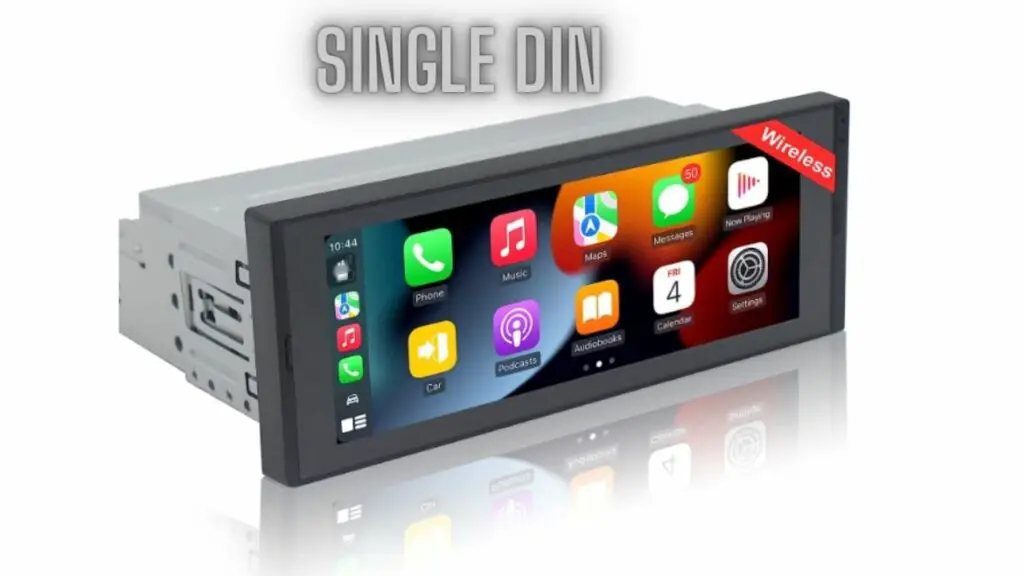

Single DIN car stereos are audio systems designed to fit into a standard single DIN slot in a vehicle’s dashboard. Here’s an overview of Single DIN car stereos, including their features, specifications, installation, and pros and cons:
- Description:
- Single DIN car stereos typically have a height of about 2 inches and a width of 7 inches, conforming to the standard DIN (Deutsches Institut für Normung) specifications.
- They feature a single-slot design, which means they have limited space for controls, displays, and additional features compared to Double DIN stereos.
- Single DIN stereos may include a built-in radio tuner, CD player, USB port, auxiliary input, and Bluetooth connectivity for audio streaming and hands-free calling.
- Features and Specifications:
- Control Interface: Single DIN stereos feature physical buttons, knobs, and sometimes a small display for controlling audio playback, radio tuning, and settings adjustment.
- Audio Playback: They support various audio formats such as MP3, WMA, and AAC, allowing playback from CDs, USB drives, and auxiliary input devices.
- Radio Tuner: Single DIN stereos include an AM/FM radio tuner with presets for storing favorite stations and automatic scanning for stations with strong signals.
- Connectivity: Bluetooth connectivity enables wireless audio streaming from compatible devices and hands-free calling with a paired smartphone.
- Display: Some Single DIN stereos feature a basic LCD display for showing track information, radio station frequencies, and settings.
- Installation:
- Installation of Single DIN car stereos involves removing the factory-installed stereo unit from the dashboard and mounting the new stereo into the DIN slot using a mounting kit and wiring harness adapter.
- Wiring connections must be made to integrate the new stereo with the vehicle’s electrical system, including power, ground, speakers, and antenna.
- Installation may require the removal of trim panels, climate control units, or other components to access the stereo mounting location.
- Pros and Cons:
- Pros:
- Compatibility: Single DIN stereos are compatible with most vehicles equipped with a single DIN slot, allowing for easy aftermarket upgrades.
- Space-Saving: Their compact size leaves room in the dashboard for other accessories or storage compartments.
- Affordability: Single DIN stereos are generally more affordable than Double DIN models, making them a budget-friendly option for upgrading car audio systems.
- Cons:
- Limited Display and Controls: Due to their size, Single DIN stereos have limited space for displays and controls, which may impact usability and functionality.
- Limited Features: Compared to Double DIN stereos, Single DIN models may have fewer features and connectivity options, such as smaller displays and fewer inputs/outputs.
- Pros:
In summary, Single DIN car stereos offer a compact and budget-friendly option for upgrading a vehicle’s audio system. While they may have limited display and control options compared to Double DIN stereos, they provide essential audio playback and connectivity features suitable for many drivers’ needs.
Double DIN Car Stereos
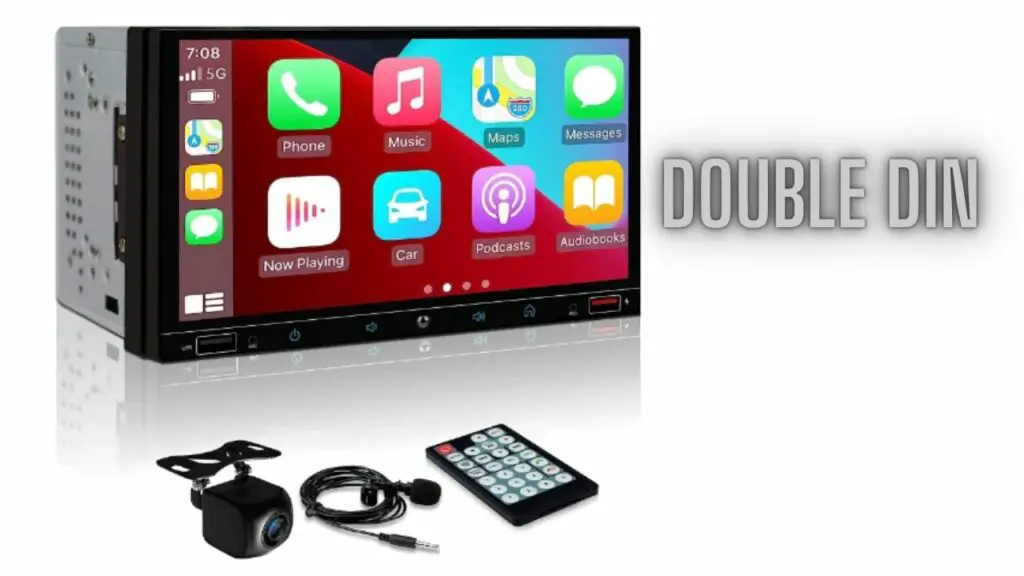

Double DIN car stereos are audio systems designed to fit into a double-sized DIN slot in a vehicle’s dashboard. Here’s an overview of Double DIN car stereos, including their features, specifications, installation, and pros and cons:
- Description:
- Double DIN car stereos have a larger form factor compared to Single DIN stereos, with a height of about 4 inches and a width of 7 inches.
- They feature a double-slot design, providing more space for controls, displays, and additional features compared to Single DIN stereos.
- Double DIN stereos may include built-in features such as a radio tuner, CD/DVD player, touchscreen display, GPS navigation, Bluetooth connectivity, and smartphone integration.
- Features and Specifications:
- Touchscreen Display: Double DIN stereos often feature a large touchscreen display, ranging in size from 6.2 inches to 10 inches or more, providing intuitive control and access to various functions and settings.
- Multimedia Playback: They support various multimedia formats such as CDs, DVDs, MP3, WMA, AAC, and video formats, allowing playback from discs, USB drives, and auxiliary input devices.
- Connectivity: Bluetooth connectivity enables wireless audio streaming from compatible devices, hands-free calling, and access to smartphone features such as contacts, messages, and music libraries.
- Navigation: Some Double DIN stereos include built-in GPS navigation systems with turn-by-turn directions, real-time traffic updates, and points of interest.
- Installation:
- Installation of Double DIN car stereos involves removing the factory-installed stereo unit from the dashboard and mounting the new stereo into the double DIN slot using a mounting kit and wiring harness adapter.
- Wiring connections must be made to integrate the new stereo with the vehicle’s electrical system, including power, ground, speakers, and antenna.
- Installation may require additional modifications to the dashboard, such as trimming or cutting to accommodate the larger stereo size.
- Pros and Cons:
- Pros:
- Enhanced Display and Controls: Double DIN stereos feature large touchscreen displays with intuitive controls, providing easy access to multimedia playback, navigation, and smartphone integration features.
- Expanded Features: They offer a wide range of features and functionalities, including multimedia playback, navigation, Bluetooth connectivity, and smartphone integration, enhancing the overall in-car entertainment and connectivity experience.
- Aesthetic Appeal: Double DIN stereos can add a modern and high-tech look to the vehicle’s dashboard, especially with their large touchscreen displays and sleek designs.
- Cons:
- Space Requirements: Due to their larger size, Double DIN stereos may require more space in the dashboard, potentially limiting options for aftermarket upgrades or accessories.
- Cost: Double DIN stereos are generally more expensive than Single DIN models, especially those with advanced features such as large touchscreen displays and built-in navigation systems.
- Installation Complexity: Installing a Double DIN stereo may require additional modifications to the dashboard, such as cutting or trimming, and may be more challenging compared to installing a Single DIN stereo.
- Pros:
In summary, Double DIN car stereos offer a wide range of features and functionalities, including large touchscreen displays, multimedia playback, navigation, Bluetooth connectivity, and smartphone integration. While they may require more space and installation complexity compared to Single DIN stereos, they provide an enhanced in-car entertainment and connectivity experience for drivers and passengers.
Differences Between Single Din and Double Din
Here are the key differences between Single DIN and Double DIN car stereos:
- Size and Form Factor:
- Single DIN: Single DIN car stereos have a standard height of about 2 inches and a width of 7 inches. They fit into a single-sized DIN slot in the dashboard.
- Double DIN: Double DIN car stereos are larger, with a height of about 4 inches and a width of 7 inches. They require a double-sized DIN slot in the dashboard.
- Display and Controls:
- Single DIN: Single DIN stereos typically have limited space for displays and controls due to their smaller size. They may feature physical buttons, knobs, and a small LCD or LED display for basic functions.
- Double DIN: Double DIN stereos often feature large touchscreen displays ranging from 6.2 inches to 10 inches or more. They provide intuitive touchscreen controls for multimedia playback, navigation, and other advanced features.
- Features and Functionality:
- Single DIN: Single DIN stereos offer basic audio playback features such as radio tuning, CD player, and auxiliary input. Some models may include Bluetooth connectivity for hands-free calling and audio streaming.
- Double DIN: Double DIN stereos provide expanded features and functionality, including multimedia playback from various sources (CDs, DVDs, USB drives), built-in navigation systems, Bluetooth connectivity with smartphone integration, and advanced audio settings.
- Space Usage:
- Single DIN: Single DIN stereos take up less space in the dashboard, leaving more room for other accessories or storage compartments. They are suitable for vehicles with limited dashboard space.
- Double DIN: Double DIN stereos require more space in the dashboard due to their larger size. They may limit options for aftermarket upgrades or accessories but provide a modern and high-tech look to the dashboard.
- Installation Complexity:
- Single DIN: Installing a Single DIN stereo is generally less complex and straightforward compared to installing a Double DIN stereo. It typically involves removing the factory-installed stereo unit and mounting the new stereo into the DIN slot using a mounting kit and wiring harness adapter.
- Double DIN: Installing a Double DIN stereo may require additional modifications to the dashboard, such as cutting or trimming, to accommodate the larger size. It may also involve more wiring connections and integration with the vehicle’s electrical system.
- Cost:
- Single DIN: Single DIN stereos are generally more affordable compared to Double DIN models, making them a budget-friendly option for upgrading car audio systems.
- Double DIN: Double DIN stereos are typically more expensive due to their larger size and advanced features such as touchscreen displays and built-in navigation systems.
In summary, the main differences between Single DIN and Double DIN car stereos lie in their size, display and controls, features and functionality, space usage, installation complexity, and cost. Vehicle owners should consider their preferences, budget, and available dashboard space when choosing between Single DIN and Double DIN stereos for their vehicles.
Choosing Between Single DIN and Double DIN
Choosing between Single DIN and Double DIN car stereos depends on various factors such as your preferences, budget, vehicle compatibility, and desired features. Here are some considerations to help you make the right decision:
- Dashboard Space:
- Evaluate the available space in your vehicle’s dashboard. If you have limited space or prefer to maintain a minimalist look, a Single DIN stereo may be the better option.
- If you have ample space and want a larger touchscreen display for enhanced functionality and aesthetics, consider a Double DIN stereo.
- Budget:
- Determine your budget for the car stereo upgrade. Single DIN stereos are generally more affordable compared to Double DIN models.
- If you’re on a tight budget and primarily need basic audio playback features, a Single DIN stereo can fulfill your needs without breaking the bank.
- Features and Functionality:
- Consider the features and functionalities you require in a car stereo. Double DIN stereos offer expanded features such as larger touchscreen displays, multimedia playback options, built-in navigation systems, and advanced connectivity features like Bluetooth and smartphone integration.
- If you desire advanced features and enhanced connectivity options for multimedia playback, navigation, and smartphone integration, a Double DIN stereo may be the better choice.
- Vehicle Compatibility:
- Check your vehicle’s compatibility with Single DIN and Double DIN stereos. Most vehicles come with either a Single DIN or Double DIN slot in the dashboard.
- If your vehicle is compatible with both Single DIN and Double DIN stereos, consider factors such as aesthetics, functionality, and ease of installation to determine the best fit for your vehicle.
- Installation Complexity:
- Assess your comfort level with car stereo installation and any modifications required to install a Double DIN stereo.
- Installing a Single DIN stereo is generally less complex and straightforward compared to installing a Double DIN stereo, which may involve additional modifications to the dashboard and wiring connections.
- Future Needs:
- Consider your future needs and preferences for in-car entertainment and connectivity. Choose a car stereo that offers features and functionalities that can accommodate your evolving needs.
- If you anticipate needing advanced features such as built-in navigation or expanded multimedia playback options, investing in a Double DIN stereo with these capabilities may be beneficial in the long run.
Ultimately, the choice between Single DIN and Double DIN car stereos depends on your individual requirements, preferences, and budget. Carefully weigh the factors mentioned above to select the car stereo that best suits your needs and enhances your driving experience.
Single Din vs Double Din FAQs
1. What is the difference between Single DIN and Double DIN?
- The main difference lies in their size and form factor. Single DIN car stereos are smaller, occupying a single DIN slot in the dashboard, while Double DIN stereos are larger and require a double-sized DIN slot.
2. Can I replace a Single DIN stereo with a Double DIN stereo?
- In some cases, yes, but it may require modifications to the dashboard to accommodate the larger size of the Double DIN stereo. Additionally, you may need a mounting kit and wiring harness adapter for proper installation.
3. What features do Single DIN stereos typically have?
- Single DIN stereos usually feature basic audio playback options such as radio tuning, CD player, and auxiliary input. Some models may include Bluetooth connectivity for hands-free calling and audio streaming.
4. What features do Double DIN stereos typically have?
- Double DIN stereos offer expanded features such as larger touchscreen displays, multimedia playback options (CDs, DVDs, USB drives), built-in navigation systems, Bluetooth connectivity, and advanced smartphone integration.
5. Are Double DIN stereos more expensive than Single DIN stereos?
- Yes, generally Double DIN stereos tend to be more expensive due to their larger size and advanced features. Single DIN stereos are usually more budget-friendly.
6. Which one is easier to install, Single DIN or Double DIN?
- Single DIN stereos are typically easier to install as they require less space and fewer modifications to the dashboard. Double DIN stereos may require additional modifications and wiring connections, making installation more complex.
7. Can I install a Single DIN stereo in a vehicle with a Double DIN slot?
- Yes, you can install a Single DIN stereo in a vehicle with a Double DIN slot using a mounting kit and a DIN pocket or filler panel to fill the extra space in the dashboard.
8. Which one offers better audio quality, Single DIN or Double DIN?
- The audio quality depends more on the specific stereo model rather than whether it’s Single DIN or Double DIN. Both types can offer high-quality audio, but Double DIN stereos may have more advanced audio settings and features.
9. Can I upgrade from a Single DIN to a Double DIN stereo for better functionality?
- Yes, upgrading to a Double DIN stereo can provide enhanced functionality and features such as a larger touchscreen display, built-in navigation, and advanced connectivity options. However, it may require modifications to the dashboard and additional installation steps.
10. Which one is more common in vehicles, Single DIN or Double DIN?
- Single DIN stereos are more common in older vehicles or vehicles with limited dashboard space. Double DIN stereos are becoming increasingly popular in modern vehicles due to their larger displays and advanced features.
Conclusion
In conclusion, choosing between a Single DIN and Double DIN car stereo is a decision that requires careful consideration of various factors such as your preferences, budget, vehicle compatibility, and desired features.
- Single DIN Stereos are compact, budget-friendly options suitable for vehicles with limited dashboard space. They offer basic audio playback features and are straightforward to install. However, they may lack advanced functionalities and larger displays compared to Double DIN stereos.
- Double DIN Stereos provide larger touchscreen displays, expanded features, and enhanced connectivity options such as built-in navigation systems and advanced smartphone integration. While they offer a modern and high-tech look to the dashboard, they may require more space and installation complexity.
Ultimately, your decision should be based on your specific needs and priorities. Consider factors such as available dashboard space, desired features, budget constraints, and installation complexity. By carefully evaluating these factors, you can choose the car stereo that best suits your requirements and enhances your driving experience.

